Elias Stainfeld. Collection
Elias Stainfeld was born on 11 May 1907 in Antwerp, Belgium, as the son of diamond broker Mordka Stainfeld (b. 12/04/1877 in Warsaw, Poland) and his wife Chaja Hillel (b. 01/09/1883 in Krakow, Poland). Elias had two younger sisters : Sara (b. 06/10/1908 in Antwerp, Belgium), who probably died as a child, and Charlotte (b. 06/01/1912 in Antwerp, Belgium). In the 1920s, the Stainfeld family obtained Belgian nationality. They became well-to-do and were close with the families of Chaja’s five sisters (Gitel or Gusta, Marya, Bluma, Rosalie and Blanche) and her brother (Abisch Adolf). Elias Stainfeld followed in his father’s footsteps and became a diamond cutter. Sadly, mother Chaja Hillel passed away in Antwerp on 24 March 1933. Elias’ sister Charlotte Stainfeld married the Belgian diamond merchant Georges Simon Censer (b. 13/08/1909 in Antwerp, Belgium). The couple’s daughter, Helene Anne Censer, was born in Antwerp on 17 May 1937. In May 1940, while serving in the Belgian army, Georges was captured by the Germans. He would be interned as a POW until April 1941. His wife and daughter sent him dozens of photos. Almost a year after his capture, Georges was reunited with his family in Antwerp. In 1942, he presumable was able to flee via France and Spain to the United Kingdom, where he joined the allied forces. Georges Censer assisted in the liberation of Europe only to return to Antwerp in 1945 to learn that his wife Charlotte Stainfeld and their daughter Helene Anne Censer had been deported via transport XXII B in September 1943. Both perished, as did his father-in-law Mordka Stainfeld, whom had been deported via Transport XII in October 1942. In May 1940, Elias Stainfeld fled to France with his grandmother Rachel Lemberger, and uncles, aunts and cousins from the Hillel, the Blajwajs-Hillel and the De Haas-Hillel (later Brin-Hillel) families. All were forced to settle down in Aulus-les-Bains. Many of the Blajwajs, Hillel, Brin and De Haas family members would be deported from France and killed. On 14 June 1944, Elias attempted to cross the French-Spanish border under the assumed name of Elie Souquet. He himself was arrested and was deported via Transport 76 from Drancy to Auschwitz-Birkenau on 30 June 1944. Upon arrival, the number 16864 was tattooed on Elias’s arm. He worked for six months as a slave labourer at the Monowitz sub-camp. When Auschwitz-Birkenau was evacuated in January 1945, Elias Stainfeld was too weak to participate in the death march, so the Nazis left him behind at a hospital block in Monowitz. He was still there when the camp was liberated. Elias returned to Belgium via France in July 1945, and resumed his work as a diamond cutter in Antwerp. He was reunited with some of his friends among whom his brother-in-law Georges Simon Censer, his cousin Isi De Haas and François Brandsdorfer. This collection contains : three war-time letters from Charlotte Stainfeld to her brother Elias Stainfeld living in France ; documents and three letters with news about acquaintances written by Elias Stainfeld’s (unidentified) friend Blajwajs or Blejwas who was interned at the Le Vernet camp ; a post-war letter sent by survivor Elias Stainfeld from the Monowitz labour camp to the address of his deported sister Charlotte Stainfeld in Antwerp ; three post-war letters delivering the news of his sister and niece’s deportation to Elias Stainfeld ; a letter and a telegram involving Elias Stainfeld’s paternal uncle Adolf Hillel ; four post-war newspaper clippings regarding trials and Belgian rescuers ; post-war documents regarding the status of Elias Stainfeld ; Elias Stainfeld’s kippah, teffilin and prayer camisole, two tallith (prayer shawls) and two small storage bags in velvet ; 67 photographs of Elias Stainfeld’s parents Mordka Stainfeld and Chaja Hillel, his sister Charlotte Stainfeld and her daughter Helene Anne Censer, and their friends the De Haas family. Contact Kazerne Dossin Documentation Centre: archives@kazernedossin.eu
- EHRI
- Archief
- be-002157-kd_00087
- Antwerp
- German Occupation
Bij bronnen vindt u soms teksten met termen die we tegenwoordig niet meer zouden gebruiken, omdat ze als kwetsend of uitsluitend worden ervaren.Lees meer




